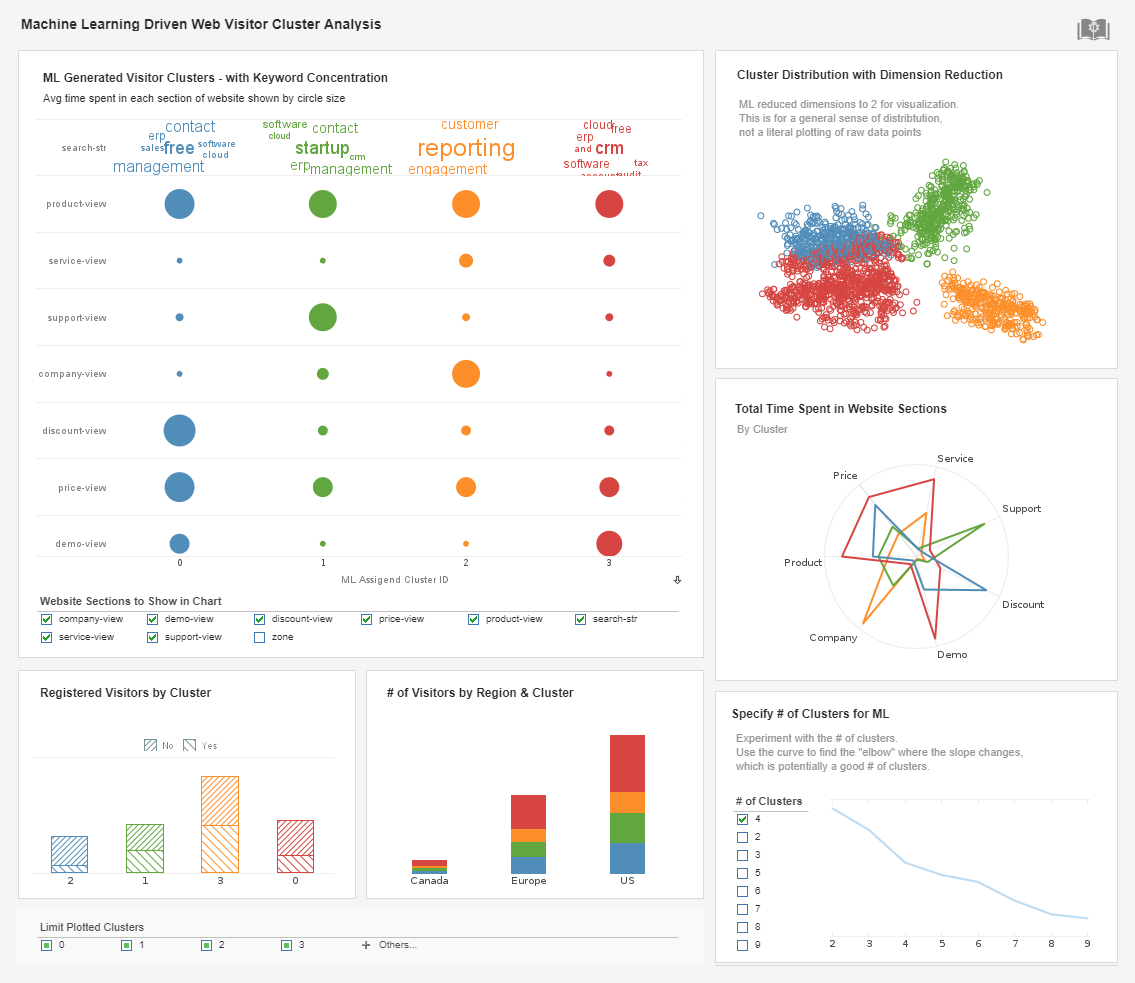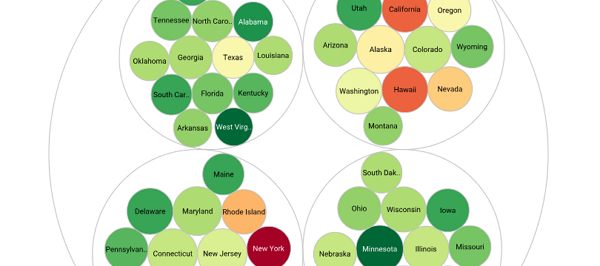What are some business intelligence trends for the future?
InetSoft's CMO, Mark Flaherty, speaks about future BI trends:
One trend is a people trend. When you think about information consumers and the way that people expect to digest, consume, or use information, the expectations of those people are beginning to change as we see the new generation of young people entering the workforce. Their expectations of information access and consumption have been so influenced by social media. This is going to have an impact on how enterprise data is going to be consumed.
Part of the impact will be on the user interface of BI tools and on the information delivery methods. There will be less emphasis on the model of logging into a business intelligence application to find out information. They will want it to just “be there.” That might mean embedding that information inside the ERP or CRM application that they always use. It might also mean embedding it in social media applications.
You might call this goal for BI to become “invisible.” By that I mean people are using BI to a much higher degree but they are not actively, intentionally seeking out BI. In other words, they don’t have to consciously make another step to see relevant information by using a BI tool. Rather the information is already available in the context of where they need it. That could be any kind of interface or application.
So the goal for BI technology is to have it inserted all over the place. So the actual contact with BI becomes greater, but the conscious use of business intelligence becomes much smaller.
Second Trend in Business Intelligence
The second trend in business intelligence is a technology one. It’s in-memory computing. For almost the entire history of computing, up until now really, memory has been a resource that has always been a limiter of what can be done in information processing. While the cost per MB or GB kept coming down, it’s only now where it’s low enough to catch up with the data processing needs we have in everyday business. It now makes it possible to think about redesigning software to take advantage of it, relying less on the traditional disk-based architecture. Granted data stores are growing all the time, but you can now have so much of your data sitting in memory without disrupting the operational systems collecting new data.
That fosters real-time analysis that is closer and closer to the literal meaning of those words. It also lessens the reliance on data warehousing for rolling up data, for instance. This technology trend is one that has gradually crept on us, not that it was not foreseeable, but it is now clear that it can cause fundamental change and allow us to rethink what BI means and how it can be used. So you have an interesting combination of user expectations and technology capabilities converging to make this idea of ubiquitous BI a realistic possibility. The assumptions of what is and isn’t possible just won’t apply any more. So we need to rethink our definition of business intelligence.
The Trend of AI in BI Software
This integration is transforming how businesses analyze data, derive insights, and make decisions. Here's a detailed exploration of this trend, highlighting the ways AI is enhancing BI software, the benefits, and some real-world applications:
The Rise of AI in BI Software
Enhanced Data Processing and Analysis
1. Automated Data Preparation: AI-powered BI tools can automate the data preparation process, which includes data cleaning, integration, and transformation. This reduces the time and effort required to prepare data for analysis.
2. Advanced Analytics: AI algorithms, such as machine learning and natural language processing (NLP), enable more advanced analytics. These tools can identify patterns, trends, and correlations in data that might be difficult for human analysts to detect.
3. Predictive Analytics: AI in BI software can forecast future trends and outcomes based on historical data. Predictive analytics models use machine learning algorithms to predict sales, customer behavior, market trends, and more, allowing businesses to make proactive decisions.
Key Benefits of AI-Enhanced BI Software
1. Improved Decision-Making: AI-driven insights are often more accurate and comprehensive, providing a stronger foundation for decision-making. By leveraging AI, businesses can make more informed, data-driven decisions.
2. Increased Efficiency: AI automates many of the time-consuming tasks associated with data analysis, freeing up human analysts to focus on more strategic activities. This leads to increased efficiency and productivity.
3. Enhanced Data Visualization: AI can enhance data visualization by automatically generating relevant charts, graphs, and dashboards. AI-powered BI tools can also provide interactive visualizations that allow users to explore data more intuitively.
4. Personalization: AI can tailor BI insights to individual users based on their role, preferences, and behavior. Personalized dashboards and reports ensure that users receive the most relevant information for their needs.
Applications of AI in BI Software
1. Natural Language Querying: AI-driven BI tools often include NLP capabilities that allow users to interact with data using natural language queries. Users can ask questions in plain English and receive answers in the form of visualizations or reports.
2. Anomaly Detection: AI algorithms can continuously monitor data for unusual patterns or anomalies. This is particularly useful for detecting fraud, identifying operational issues, or spotting unexpected changes in key metrics.
3. Customer Insights: AI-powered BI tools can analyze customer data to uncover deep insights into customer behavior, preferences, and sentiment. This helps businesses personalize their marketing efforts and improve customer satisfaction.
4. Real-Time Analytics: AI enables real-time data processing and analytics, providing businesses with up-to-the-minute insights. This is crucial for industries where timely information is essential, such as finance, retail, and supply chain management.
More Articles About BI Software
Evaluate InetSoft's Continuous Online Reporting Program - Are you looking for a good continuous online reporting program? InetSoft is a pioneer in offering flexible, enterprise-grade reporting software. Use an easy-to-use drag-and-drop designer to create great-looking web-based dashboards and reports. View a demo and try interactive examples. All new clients and partners get free one-on-one business intelligence expert help to accelerate deployment...
Good AWS Business Intelligence Tool - Are you looking for good AWS business intelligence tools? InetSoft's pioneering dashboard reporting application produces great-looking web-based dashboards with an easy-to-use drag-and-drop designer. Mash up your application performance data with any other in your enterprise. View a demo and try interactive examples...
Intelligent Analysis Toolbox - The nearly universal compatibility in Style Intelligence gives the program immense power but what about speed and the ever present weariness of eating up system resources? Well, Style Intelligence is a veritable BI tool box. Since it runs from the web this means that it leaves as small a footprint as possible on system resources. InetSoft even offers its own cloud storage solution to lighten the already miniscule resource load...
Personalization of BI Dashboards - Personalization of Business Intelligence (BI) dashboards has seen significant advancements recently, largely driven by the integration of advanced technologies such as artificial intelligence (AI) and machine learning (ML). These technologies enable BI platforms to automatically tailor dashboards to individual users based on their roles, preferences, and past interactions. AI algorithms analyze user behavior and data usage patterns to deliver personalized content, ensuring that users have quick access to the most relevant data and insights...


